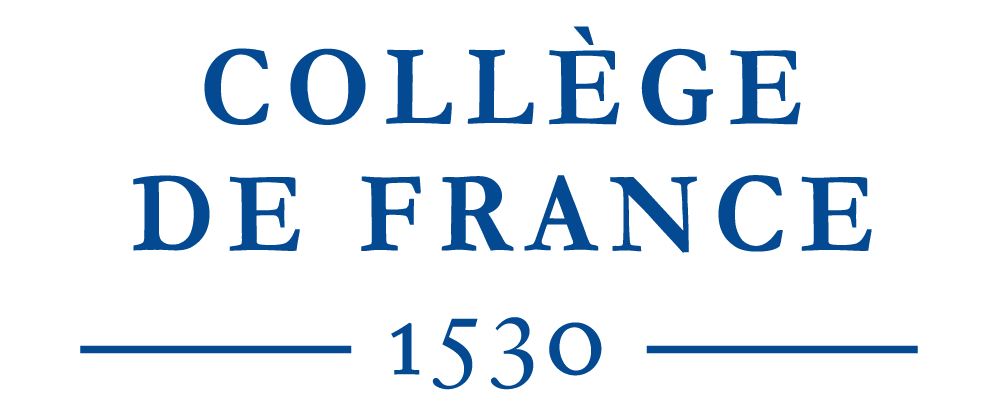Reviewed: Laurent Gayer, Karachi. Ordered Disorder and the Struggle for the City, Hurst, 2014, xxv + 336 pages
Laurent Gayer’s book, Karachi. Ordered Disorder and the Struggle for the City, tells the story of a city described seven decades ago as the “city of lights”, but now often portrayed as one of the world’s most chaotic and dangerous metropolises. Karachi experienced deep and rapid transformations since Pakistan gained independence in 1947, from a provincial capital with less than a million inhabitants to the present metropolis with a population exceeding 21 million in 2011. The author attempts to overturn a common trope that depicts Pakistan’s economic hub and former capital as a territory gone into chaos, plagued by seemingly indiscriminate violence preventing the state from exercising its writ. While violence in Karachi has brought significant media and scholarly attention on the city and its conflicts, Gayer’s main concern, here, is “not merely how violent conflict came to Karachi, but how it became a permanent, structuring feature of city life and politics” (p. 19). His main argument is that Karachi’s disorder is in fact ordered, in the sense that there are “patterns of domination, rituals of interaction, forms of arbitration” which make Karachi work “despite and sometimes through violence” (p. 5). In spite of rising levels of violence in the past four decades, these structural features have prevented Karachi’s conflicts from “escalating into a general conflagration” (p. 10). Based on varied literary and academic sources complemented by fieldwork, this dense and rich study comprises of four chapters tracing the trajectories of those involved in Karachi’s violent environment, and of three chapters – the first, and the last two – which paint a broader picture of the causes and effects of violence in Karachi.
The routinisation of violence
To trace the progressive routinisation of violence in Karachi, Laurent Gayer first looks at university campuses, dominated from the 1950s to the late 1970s by left-wing groups active in mobilizing students against government policies. Rivalries between student groups became increasingly contentious, particularly at the “turbulent” Karachi University, where the creation of the All-Pakistan Mohajir Students Organisation (APMSO) [1] in 1978 and the sudden influx of weapons in the wake of the 1979 Soviet Union’s invasion of Afghanistan entirely changed the rules of the game. This led to the “first ‘political’ killing” at Karachi University in February 1981, an event “predictable but contingent” (p. 66): “this first killing at KU suggests that political violence is not merely the outcome of social, economic and political changes predating the conflict; it also takes unanticipated courses and tends to reproduce itself by generating its own causalities in the course of violent interactions” (p. 68). From then on, violence became a structural aspect of student politics in Karachi: “Gun battles and targeted killings were now taking place on a regular basis […]. Lethal violence was no longer extraordinary. It had become routine due to everyday procedures, language and attitudes, to such an extent that for student activists, the involvement in violent groups and actions was now seen as a natural process occurring independently of agency” (p. 69). The state also played its role in indirectly fuelling violence: it banned student unions in 1984, which “accelerated the militarisation of student politics” (p. 71). Fighting now moved out of campuses: “What was now at stake was no longer the control of the campuses but that of the city at large” (p. 70).
Laurent Gayer then turns to the institutionalization of Mohajir politics through its two principal organisations: the APMSO, and the Mohajir Qaumi Movement (MQM), established in 1984. Against a teleological reading of MQM’s growth, Laurent Gayer stresses the “indeterminacy of the early years of Mohajir nationalism” (p. 79). Indeed, “at the end of the 1970s, Altaf Hussain [founder of the APMSO and MQM] and his companions were neither the first nor even the most vocal proponents of Mohajir identity politics” (p. 83). But the movement then managed to institutionalise itself into a political party whose “predominance [in Karachi is due] to its ability to operate ‘both within the framework of state institutions as well as outside’, through a parastatal power structure” (p. 104-5). The MQM deployed its activity in different branches, all contributing to its power: while it eventually became a party of government, it maintained its own “secondary state” (that is, a capacity to distribute public goods) as well as a “military” component, or capacity to enact violence. In fact, according to Gayer, the MQM’s mode of government is “premised upon a capacity to order disorder in both senses of the term—that is, a capacity to unleash but also to tame civil strife at will” (p. 207). This gave the MQM a “magic formula” that “fuse[d] militancy and governance, disruption and political convention” (p. 120) and which other contenders for the control of Karachi attempted to replicate, hence increasing the level of violence in the city.
To illustrate the violent conflicts that varying groups have waged against one another for the control of the city or some of its neighbourhoods, Laurent Gayer focuses on the example of Lyari, one of Karachi’s oldest and poorest areas, which has witnessed extreme violence in the past decade. After detailing the historical role of Lyari’s Baloch people as henchmen for politicians, the author provides a vivid description of turf wars between “bandits” (dacoits) or rival gangs. Gayer does a remarkable job of weaving into a coherent story a myriad of events that keep making the headlines, but remain difficult to make sense of. In this mapping of conflicts and power relations, the connection of the gang-war of Lyari with local and national politics is particularly interesting. Lyari’s “bandits”, Rehman Dakait and Uzair Baloch, and their public organisations, such as the People’s Aman Committee, are indeed local power-holders on whom political parties rely for securing votes or distributing public goods. This “copresence of law and disorder” (p. 160) also makes “political patronage and police/military protection […] essential to the survival of the dacoits” (p. 159). Laurent Gayer thus sheds light on “politico-criminal configurations” (p. 134) where the “gray zone of state power” lies: “that is, the space where the unlawful violence of the state meets with the ‘illegitimate’ violence of society” (p. 135).
In addition to the MQM and the dacoits of Lyari, Laurent Gayer examines one final actor that has brought its share of violence to Karachi: sectarian and jihadi groups. The protests and riots led by religious organisations in the 1950s and 1960s were superseded by organised sectarian militant groups from the 1980s onwards. These included jihadists who took part in the Afghan war, sectarian organisations, such as the Sunni Tehreek, and, in the late 2000s, the Taliban and the Pakistani Taliban—the latter targeting directly the infrastructures of the Pakistani state. As they grew and asserted themselves, these groups challenged the MQM’s predominance over Karachi and adapted to the city’s violent terrain: “most sectarian and jihadi organisations maintaining a presence in Karachi have seen their religious struggle melt into urban turf battles in recent years. […] these new turf wars bear testimony to the acclimatisation of religious militants to Karachi’s conflictive politics while pointing at their growing insertion into the city’s unofficial economy” (p. 165). The Pakistani Taliban have been able to make significant inroads in some areas of Karachi in recent years, by targeting the neighbourhoods controlled by the Pashtun nationalists of the Awami National Party (ANP). The Taliban’s capacity to enact swift justice through “community-based forms of law enforcement” (p. 204) also played a role in the expansion of its territorial control over the Pashtun areas of Karachi: “This recourse to the familiar repertoires of justice and authority—which are perceived as less intrusive, more legitimate and more efficient than the so-called ‘rule of law’ enforced by corrupt policemen and judges—has certainly facilitated the consolidation of the Taliban’s hold over these Pashtun localities” (p. 189).
Explaining the structure of Karachi’s violence
The framework that Laurent Gayer defines to explain Karachi’s « ordered disorder » is based on four dimensions: the MQM’s “power over disorder” (1) which makes it a “factor [as well as] a regulator of conflict” (2); the democratic context in which various groups vie for power (3); and the state’s ambivalence, i.e. its own recourse to unlawful violence (4) (p. 207). This framework has the advantage of examining political violence in a non-normative way: here, the “monopoly of violence” is not one of the state’s defining features, but at most one of its claims. In fact, the author correctly highlights that the Pakistani state doubtfully ever made such a claim, given its long tradition of “devolution of violence” (p. 218) inherited from the British Empire’s system of indirect rule. Let us also note that this framework conceives the MQM’s predominance both as a source and a regulator of violence. As a result, the escalation of violence in very recent years (since 2011) appears to Gayer as a sign of the erosion of the MQM’s ascendency, challenged by other actors who have nevertheless adopted its methods.
The risk of focusing almost exclusively on violence, however, is that it tends to prevent us from seeing the rest of the picture. From this perspective, violence becomes the principal regulatory mechanism of social life in Karachi. Yet we may ask if Karachi works not only “through violence” but also through “everyday peace”, as highlighted by anthropologist Laura Ring (Ring 2006). Are people’s lives and social relations in Karachi totally informed by violent conflict and its “geographies of fear”? Or are there spaces where other social processes are at work? According to Ring, looking at the “everyday micropolitical labors of peace”—of which violence forms the context—helps better understand social relations in Karachi. But apart from the micro-level of the interactions on which Ring focuses, we may also point to broader structural issues which play a role probably as structuring as violence in shaping the lives of Karachi residents, such as relations of production, social inequalities and migrations (see for instance Hasan 2009). Laurent Gayer thus shifts the focus from seeing violence as a disruptive problem to thinking violence as a structural feature of Karachi. But violence still occupies the centre stage, while other dimensions of the city’s life are taken into account only in so far as they are related with violence. If Pakistan, “for all its violence and instability, […] is anything but a lawless society” (p. 236), the role of the state in regulating, administering and governing Karachi could perhaps have been examined beyond its linkage to violence. Apart from its direct or indirect connexion to violence, the state tends here to remain in the shadows, while little attention is paid to its other modes of governance and its contributions in structuring Karachi’s society.
Laurent Gayer’s work nonetheless offers an excellent and comprehensive picture of the social dynamics that underpin Karachi’s violent conflicts. The multiple poetic references dotting the progress of the book provide striking impressions of the weight that violence exerts in the life of Karachi’s residents, while enhancing the richness and readability of this study. It constitutes undoubtedly a work of prime importance for anyone interested in Karachi, urban governance and the issue of violence in major metropolises.
To quote this article :
Julien Levesque, « Karachi: A History of Violence »,
Books and Ideas
, 12 March 2015.
ISSN : 2105-3030.
URL : https://laviedesidees.fr/Karachi-A-History-of-Violence
Nota Bene:
If you want to discuss this essay further, you can send a proposal to the editorial team (redaction at laviedesidees.fr). We will get back to you as soon as possible.










